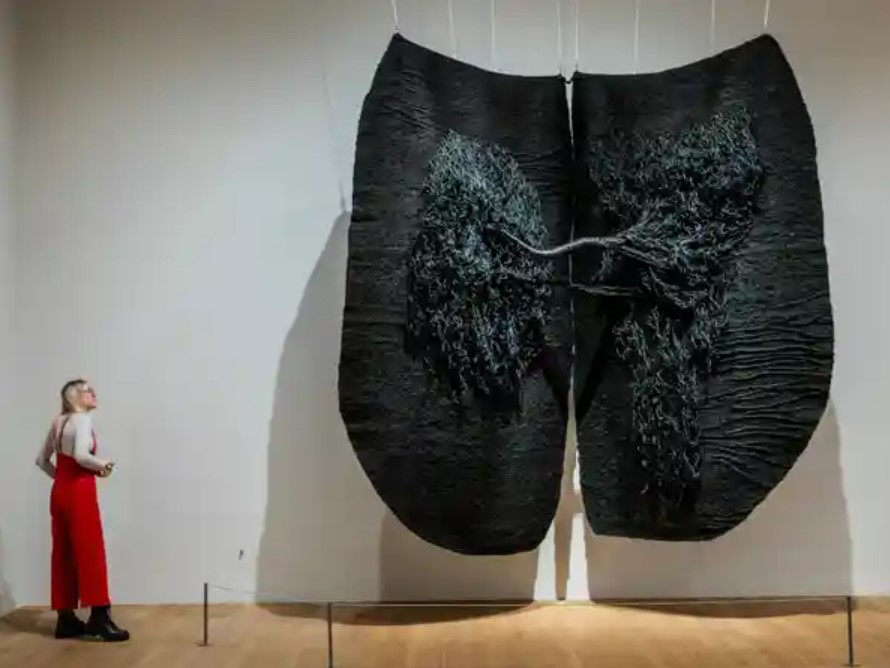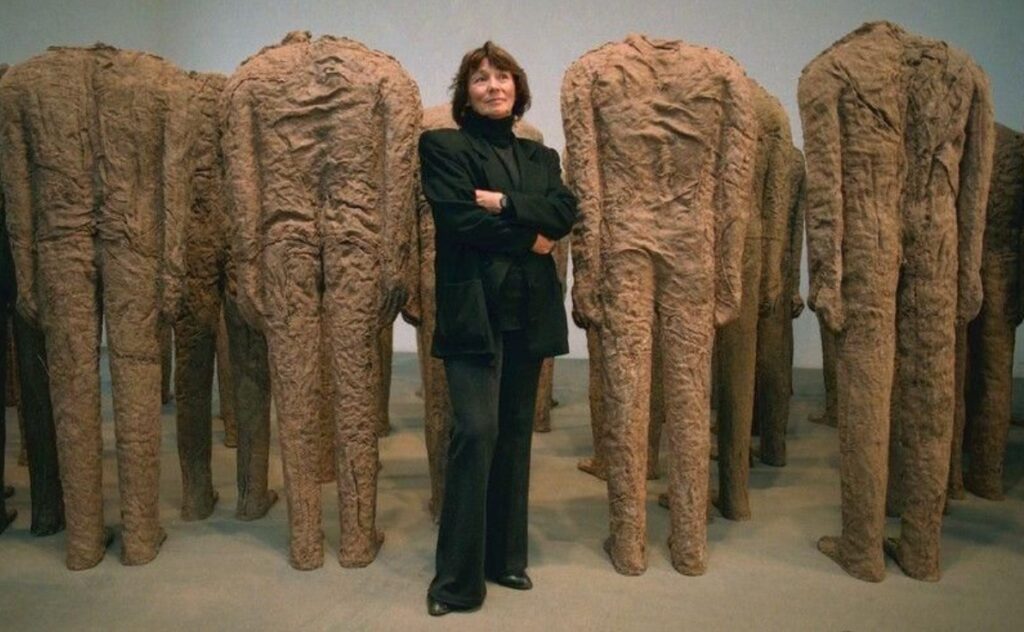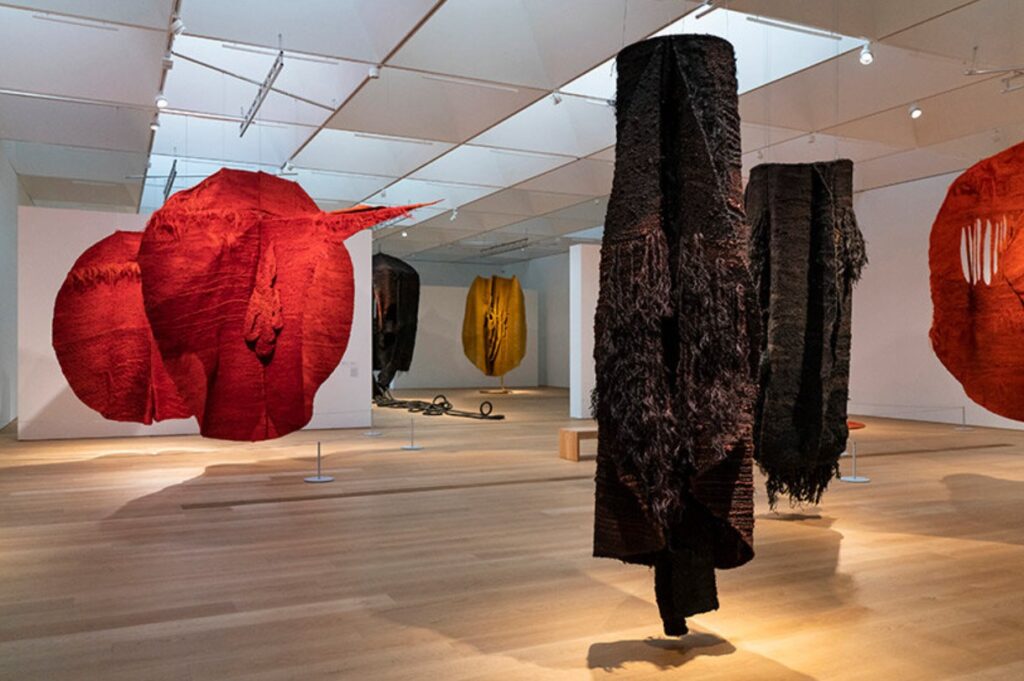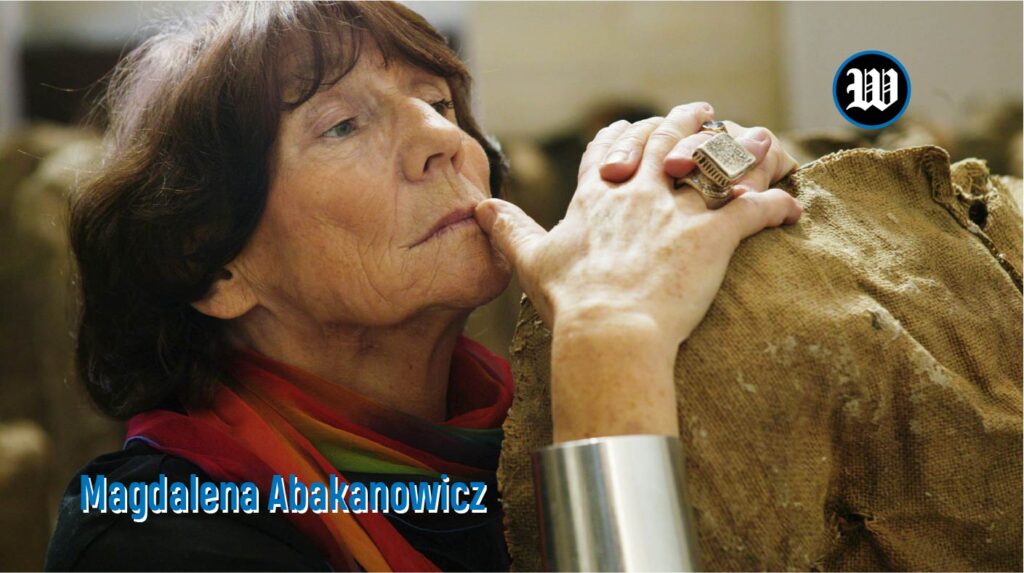Magdalena Abakanowicz, a name synonymous with innovative textile art and powerful sculptural works, has left an indelible mark on the world of contemporary art. Known for her unique approach and thematic depth, Abakanowicz’s creations continue to inspire art enthusiasts and critics alike. In this extensive exploration, we delve into her life, her most poignant artworks on view, and her lasting influence on feminist movements in art.
Early Life and Artistic Beginnings
Born in Poland in 1930, Magdalena Abakanowicz grew up in a world marked by wartime upheaval, which significantly influenced her artistic vision. Her initial works were primarily focused on textile arts, a medium through which she pioneered a new form of artistic expression. Her large-scale, three-dimensional pieces made from materials like sisal challenged traditional perceptions of sculpture and textile art.
Rise to Prominence: The Abakans
In the late 1960s, Magdalena Abakanowicz introduced her groundbreaking series known as the “Abakans.” These massive, tactile sculptures revolutionized the use of fabric in art, bringing her international acclaim. Exhibited globally, including prestigious venues like the Tate Modern, these works posed profound questions about the nature of humanity and the artist’s role in society.
Magdalena Abakanowicz at Tate Modern

The exhibition of Magdalena Abakanowicz’s work at Tate Modern not only highlighted her prominence in textile art but also showcased her versatility across other mediums, including drawings and large-scale installations. The Tate Modern’s review of her exhibition underscores the depth and complexity of her creations, positioning her as a pivotal figure in contemporary art.
Key Artworks and Themes
Magdalena Abakanowicz’s art is characterized by its exploration of the human condition, often reflecting on themes of existence, crowd psychology, and the individual versus the collective. Some of her most famous artworks include:
- The Agora: This vast installation in Chicago’s Grant Park features 106 cast iron figures, each headless and identical, symbolizing the anonymity and uniformity of the modern human experience.
- War Games: A collection that confronts the brutality of conflict and the remnants of war through tree trunks transformed into tormented figures.
Magdalena Abakanowicz and Feminism

As a prominent female artist in a predominantly male-dominated field, Magdalena Abakanowicz’s works often reflect themes of feminism and empowerment. Her approach to material and form has been viewed as a metaphor for the breaking of societal shackles and the silent resilience in the face of adversity.
Influence and Legacy
Magdalena Abakanowicz’s influence extends beyond the confines of galleries. Her innovative use of materials and her ability to communicate profound human truths have cemented her legacy as a pioneer of modern art. Her works continue to be studied and revered for their originality and emotional depth.
Magdalena Abakanowicz on View
Her artworks remain on display in various locations around the world, including the Tate Modern, where visitors can experience her visionary contributions firsthand. The ongoing exhibitions and reviews reflect the unending interest in her narrative-rich sculptures and installations.
Collaborations and Exhibitions Worldwide

Magdalena Abakanowicz’s career showcased her innovative collaborations with artists and architects, resulting in major public art installations and global exhibitions, showcasing her evolving artistic philosophy and technique.
Teaching and Mentorship
Magdalena Abakanowicz, a renowned artist and mentor, influenced younger artists through innovative teachings at the Academy of Fine Arts in Poznań, Poland, promoting personal expression and unique voice exploration.
(FAQs)
How did Magdalena Abakanowicz die?
Magdalena Abakanowicz passed away in 2017. Throughout her life, she battled with her health but continued to create and inspire until her last days.
What is the significance of Magdalena Abakanowicz’s drawings?
Her drawings offer a more intimate look at her artistic process, revealing the preliminary sketches and ideas that laid the groundwork for her larger installations and sculptures.
Conclusion
Magdalena Abakanowicz’s journey from a textile artist to a world-renowned sculptor of profound societal themes demonstrates her monumental impact on art. Her legacy, marked by exhibitions like those at Tate Modern, continues to inspire discussions on art’s role in societal and feminist narratives.


